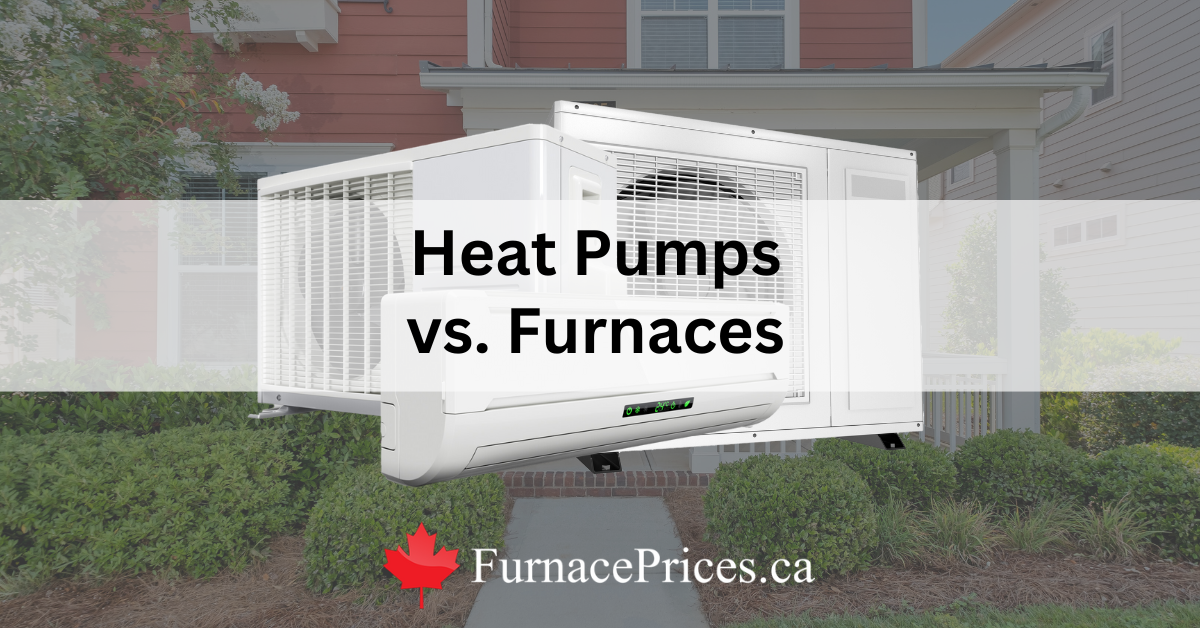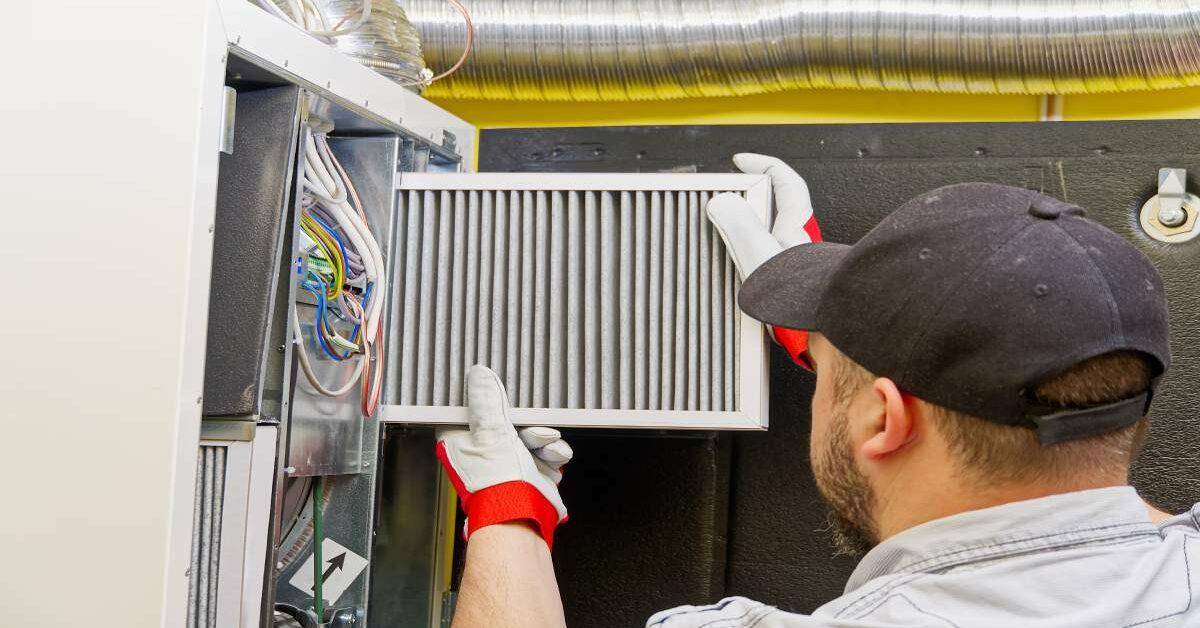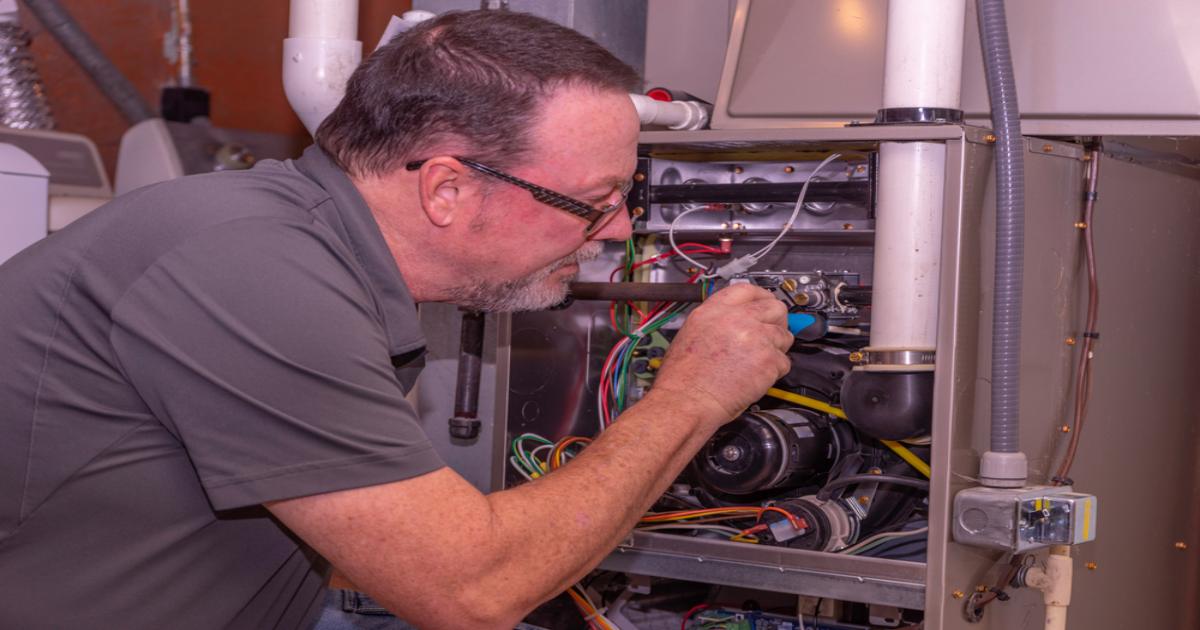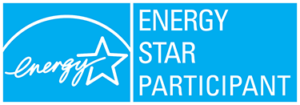What's covered in this article?
ToggleFurnaces aren’t the most exciting thing to think about until yours stops working on a freezing winter night. But you’re ahead of the game if you know how your furnace works.
You’ll be able to spot issues early, keep it running efficiently, and even save some bucks on those energy bills.
In this article, we’ll break it down in simple terms. You’ll learn how your furnace heats your home and the parts that make it tick.
How Does a Furnace Work?
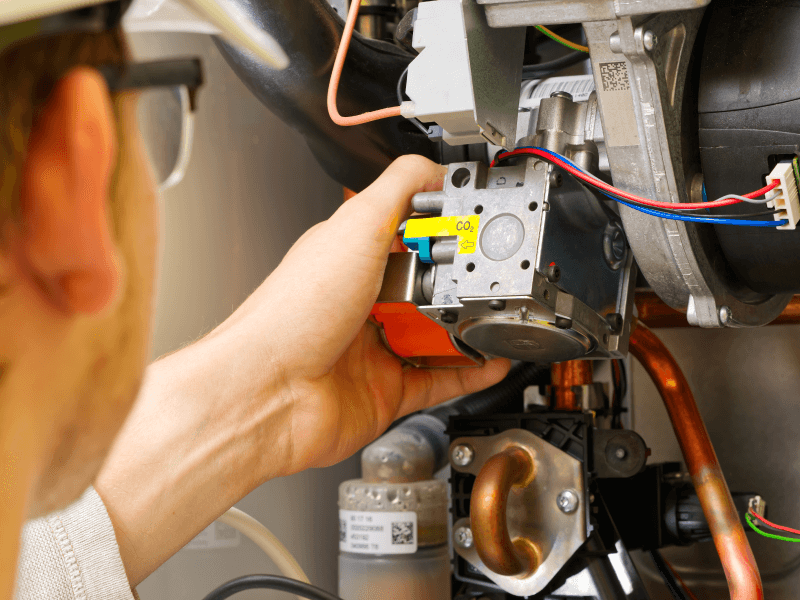
A furnace works by burning fuel (such as gas or oil) or using electricity to heat air. A blower distributes the heated air through ducts to warm the home. A thermostat regulates the furnace, turning it on and off to maintain the desired temperature.
Here’s a closer look at how it all works:
Step 1: Ignition and Combustion
If your furnace runs on gas or oil, it starts by igniting the fuel. This happens in the combustion chamber, where the burning fuel creates heat. For electric furnaces, it’s a bit different—electric heating elements warm up instead of burning fuel.
Generally, it takes about 30 to 90 minutes for a furnace to warm up.
How well this heat is used depends on the furnace’s efficiency, measured by something called AFUE (Annual Fuel Utilization Efficiency). It tells you how much of the heat generated goes directly to warming your home. For instance, a furnace with 90% AFUE uses 90% heat for your comfort while the rest escapes as exhaust.
Step 2: Heat Distribution
Once the air is heated, the blower fan works. It pushes the warm air through ducts that lead to the vents in your rooms. This distribution makes every corner of your home comfortable, even when it’s freezing outside. A more efficient furnace means less wasted heat during this stage, lowering energy bills.
Step 3: Temperature Regulation
The thermostat constantly checks the temperature in your home. When the air gets colder than you’ve set, the furnace turns on. Once your desired temperature is reached, the thermostat tells the furnace to shut off, saving energy and preventing overheating.
Types of Furnaces by How They Work
The type of furnace you have can affect how evenly your home is heated, how efficient it is, and even how much you’ll spend on energy bills.
Let’s discuss the different types of gas furnaces, starting with one of the simplest options.
Single-Stage Furnaces
A single-stage furnace operates at one consistent heat output level, either fully on or off. It uses a fixed-speed blower and burns fuel or electricity to heat air. The heated air is distributed through ducts to maintain the thermostat’s set temperature.
It works well in smaller homes and apartments where consistent heating isn’t a problem. But because they can only operate at one power level, they aren’t great at adapting to changing conditions, like when the weather shifts during the day.
Single-stage furnaces are slowly becoming obsolete as more efficient, adaptable options are now available.
Two-Stage Furnaces
A two-stage furnace operates at two heating levels: low for mild days and high for colder days. It uses a variable-speed blower to adjust airflow, improving efficiency and comfort. The furnace runs longer at the lower stage, maintaining more consistent indoor temperatures and reducing energy use compared to single-stage models.
They’re quieter, better at maintaining comfort, and help reduce those annoying temperature swings that can happen with older furnaces.
Modulating Furnaces
A modulating furnace adjusts its heat output in precise increments based on real-time indoor temperature needs. It uses a variable-speed blower and a modulating gas valve to deliver consistent and efficient heating.
Modulating furnaces are the most efficient and comfortable option on the market. They’re great for larger homes or anyone who values energy savings and top-notch performance.
Types of Furnaces by the Fuel They Use
The fuel type a furnace uses affects efficiency, cost, and environmental impact. Let’s start with one of the most common choices in Canada: gas furnaces.
Gas Furnaces
Gas furnaces are a popular option for many homes because they’re efficient and cost-effective. They run on natural gas or propane to heat air. Gas furnaces still need electricity to run specific components like circuit boards, relays, and blower motors)
Here’s a step-by-step process of how they work:
- Thermostat Sends a Signal: The thermostat detects a drop in temperature and signals the furnace to turn on.
- Ignition Starts the Burner: The furnace’s ignitor lights the burner, heating the air.
- Heat Exchanger Warms Up: The burner heats the heat exchanger, which transfers heat to the air without exposing it to combustion gases.
- Blower Distributes Air: The blower fan pushes the heated air through ducts, spreading warmth throughout the house.
- Exhaust Gases Are Vented: Combustion gases created during the process are safely vented out of the home through the flue pipe.
- Thermostat Turns Off Furnace: Once the desired temperature is reached, the thermostat signals the furnace to shut off.
Essential Parts of a Gas Furnace
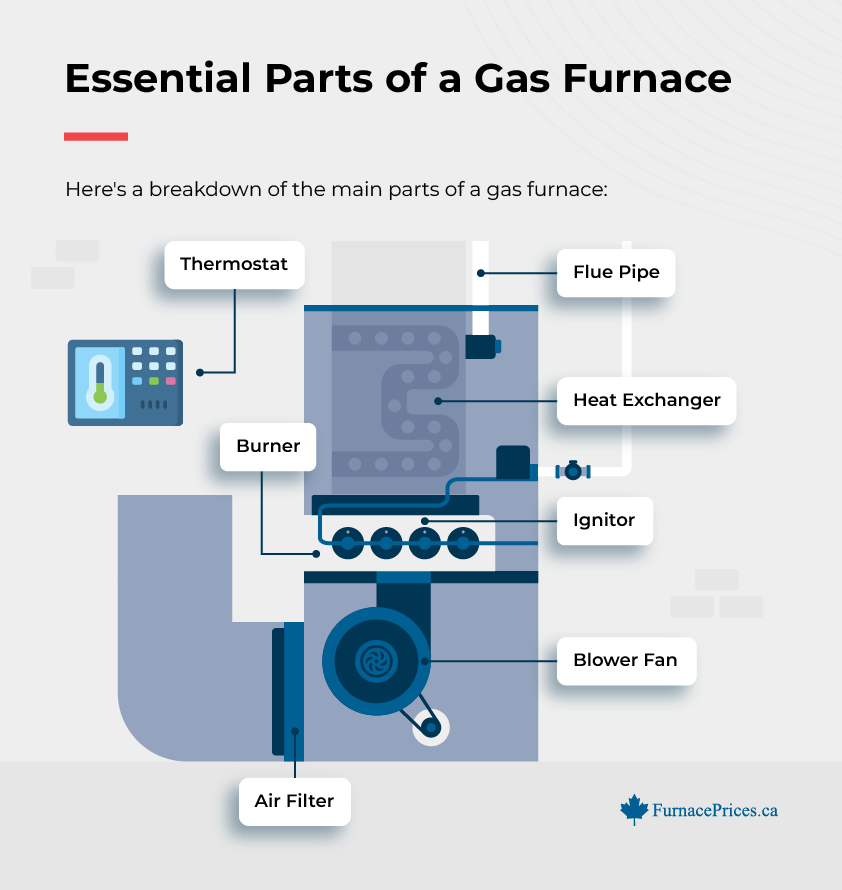
- Burner: Creates the flame to heat the heat exchanger.
- Ignitor: Starts the combustion process, replacing old pilot lights.
- Heat Exchanger: Transfers heat from the burner to the air.
- Blower Fan: Pushes warm air through the ducts.
- Thermostat: Regulates when the furnace turns on and off.
- Flue Pipe: Safely vents combustion gases outside.
- Air Filter: Traps dust and debris to keep the air clean and protect the furnace.
Get Quotes
How soon are you looking to buy?*



Electric Furnaces
Electric furnaces are another popular option, especially in areas without access to natural gas. While their operating costs can be higher, they’re often easier to maintain due to fewer moving parts.
How an Electric Furnace Works: Step-by-Step
- Thermostat Sends a Signal: The thermostat detects a drop in temperature and signals the furnace to turn on.
- Electric Heating Elements Warm Up: The furnace uses electric resistance coils to generate heat. These coils get red-hot, warming the air around them.
- Blower Fan Pushes Warm Air: The blower pulls cool air from your home, passes it over the heating elements, and distributes the warm air through the ducts.
- Heat is Delivered Evenly: The warm air circulates through the house, maintaining a steady temperature.
- Thermostat Turns Off Furnace: Once the room reaches the desired temperature, the thermostat shuts off the heating elements and blower.
Important Parts of an Electric Furnace
- Heating Elements: Coils that produce heat through electric resistance.
- Blower Fan: Pushes air across the heating elements and distributes it through the house.
- Thermostat: Controls when the furnace turns on and off.
- Air Filter: Cleans the air entering the furnace to keep the system running efficiently.
- Sequencers and Relays: Ensure the heating elements don’t all activate at once, preventing electrical surges.
- Breaker Panel: Manages the high electrical demand safely.
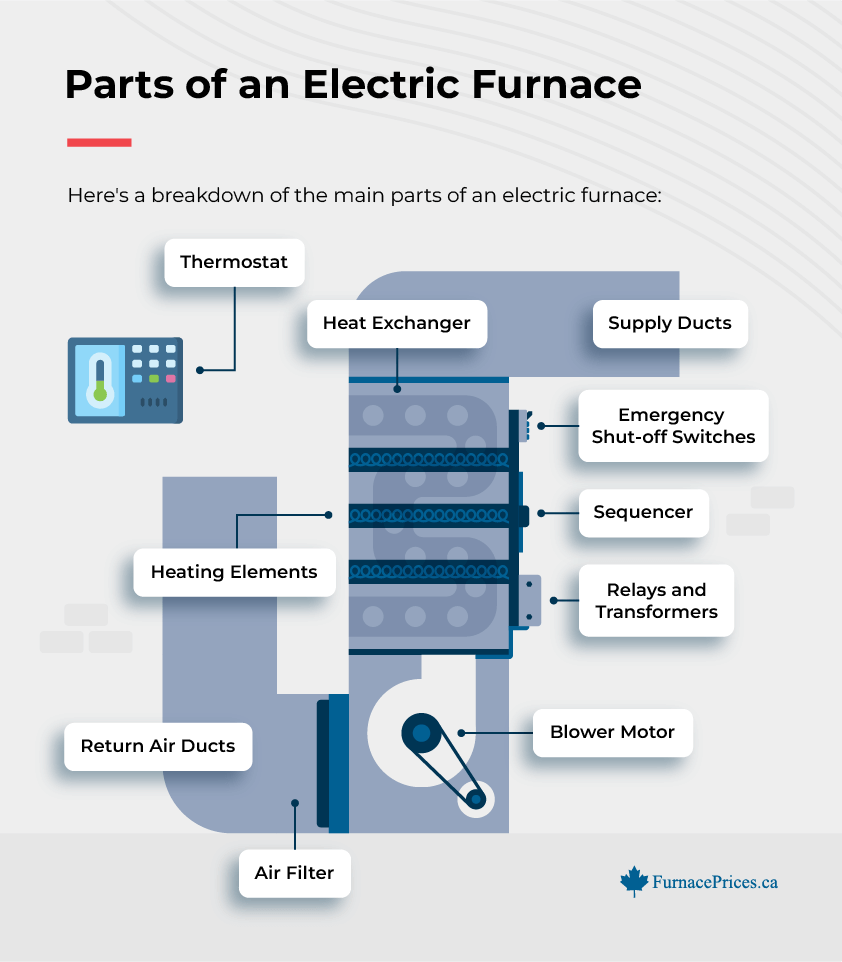
Oil Furnaces
Oil furnaces run on heating oil, stored in a tank, and are known for their ability to produce consistent warmth, even in harsh winters.
How an Oil Furnace Works: Step-by-Step
- Thermostat Sends a Signal: The thermostat detects the indoor temperature dropping and signals the furnace to turn on.
- Fuel Pump Delivers Oil: Heating oil is drawn from the storage tank and sent to the burner.
- Burner Atomizes the Oil: The burner sprays the oil into a fine mist and ignites it, creating a controlled flame.
- Heat Exchanger Transfers Heat: The flame heats the air inside the heat exchanger, transferring the heat to the circulated air.
- Blower Fan Distributes Warm Air: The blower pushes the heated air through ducts to warm the home evenly.
- Exhaust Gases Are Vented: Combustion gases are vented safely outside through the flue or chimney.
- Thermostat Shuts Off Furnace: When the desired temperature is reached, the thermostat signals the system to shut down until more heat is needed.
Important Parts of an Oil Furnace
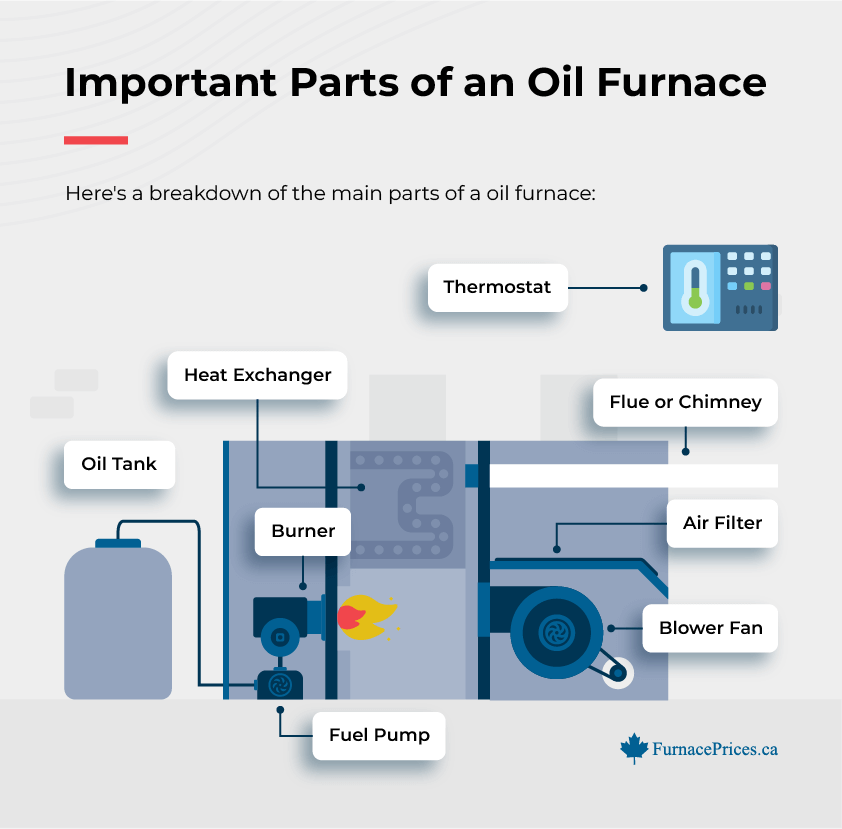
- Oil Tank: Stores the heating oil used as fuel.
- Fuel Pump: Transfers oil from the tank to the burner.
- Burner: Atomizes and ignites the oil to create heat.
- Heat Exchanger: Transfers heat from the combustion process to the air.
- Blower Fan: Distributes heated air through the ducts.
- Thermostat: Regulates the furnace operation.
- Flue or Chimney: Safely vents combustion gases outside.
- Air Filter: Traps dust and debris to keep the air clean and the system efficient.
Common Components for a Furnace
Here are the main components that are necessary to run a furnace:
Thermostat
The thermostat monitors the indoor temperature and signals the furnace to turn on or off to maintain your set temperature. Without it, the furnace wouldn’t know when to start or stop, leading to a freezing house or wasted energy.
Manual Thermostat
Manual thermostats are simple to use but require you to adjust the temperature manually. They lack scheduling features, leading to higher energy bills if you forget to lower the heat.
Programmable Thermostat
Programmable thermostats allow you to set schedules for heating, making them more efficient than manual ones. Their precise temperature control helps save energy and reduce costs.
Smart Thermostat
Smart thermostats learn your habits and adjust automatically for maximum comfort and efficiency. With remote control via Wi-Fi, they’re ideal for managing heating on the go.
Heat Exchanger
The heat exchanger is responsible for creating the heat that warms your home. It transfers heat from the furnace’s fuel combustion or electric elements to the air, ensuring your home stays cozy.
Heat exchangers also serve as safety devices by separating harmful combustion gases, like carbon monoxide, from the air circulating through your home. This makes them critical for both comfort and safety.
In condensing furnaces and boilers, there are two heat exchangers. The primary one captures heat from combustion, while the secondary exchanger recovers additional heat from the exhaust.
Blower Motor
The blower motor circulates warm air throughout your home. It pushes air through the furnace’s heat exchanger and into the duct system, ensuring every room gets evenly heated.
Modern blower motors come in two types:
- Single-speed run at one constant speed.
- Variable-speed motors adjust airflow based on your home’s heating needs.
Final Thoughts
A furnace’s operation involves a complex cycle of heating, airflow, and temperature regulation. While understanding how it works can help you spot issues, attempting DIY repairs can void your warranty or render your furnace unusable. If your furnace is acting up, it’s always best to have a professional take a look.
We provide fair and transparent quotes from trusted contractors in your area. Let the experts handle it and keep your home warm and safe. Get a free quote today—no obligation!
Frequently Asked Questions
What fails first on a furnace?
The ignitor or flame sensor is the most common component that fails first in a furnace. Ignitors, especially in gas furnaces, are subject to wear and tear due to high heat. Flame sensors can also become dirty over time, causing the furnace to stop working even if other components are fine.
Is it better to leave the furnace fan on or auto?
The auto setting is typically the better energy-efficient choice, as the fan runs only when the furnace is heating or cooling. However, if you want better air circulation or have air quality concerns, leave the fan “on” to ensure continuous airflow.
What controls the furnace’s operation?
The thermostat regulates the furnace by monitoring indoor temperatures and signaling the furnace to turn on or off to maintain the desired temperature.
Related Posts
-
Trying to figure out which HVAC heating system is the right one for your home…
-
Not sure if your furnace is ready for winter? This guide will explain everything you…
-
When it's frigid outside, during the worst winter can throw at us, the last thing…
Get Quotes
How soon are you looking to buy?*






